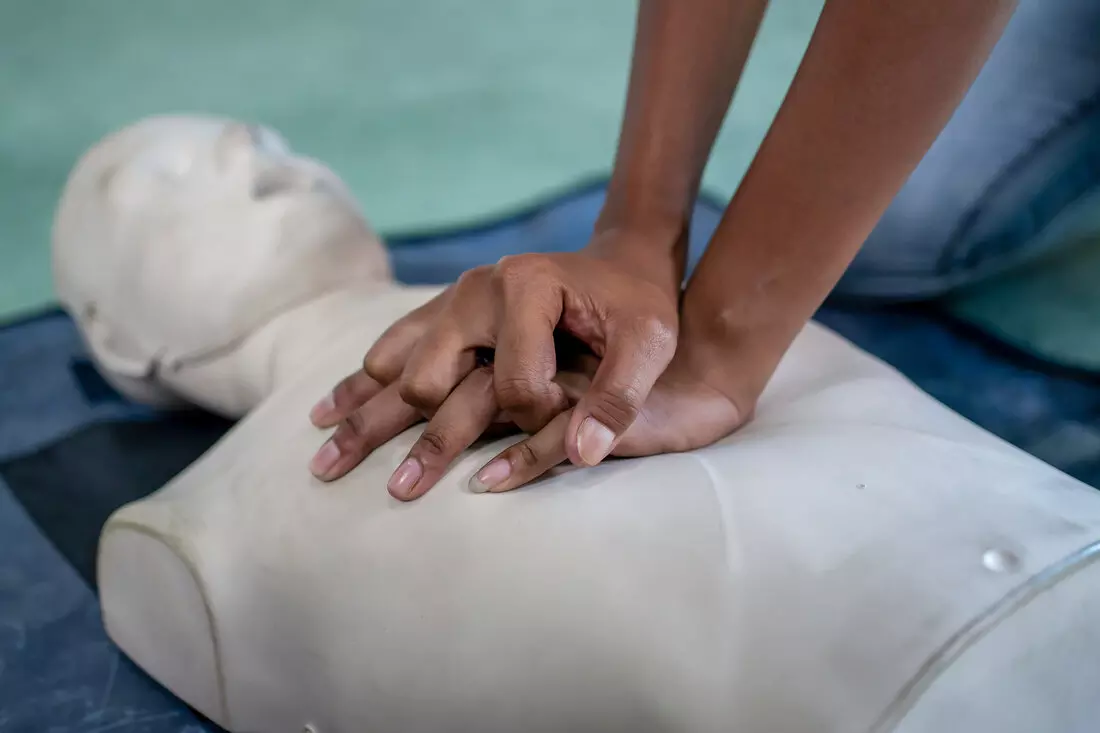Train people in CPR, AED, say doctors

Hyderabad: A 35-year-old cricket professional recently died of a sudden cardiac arrest in Pune. This marks the second such case in just two months, where a young person has succumbed to a sudden cardiac arrest.
This not being the sole case, even children are being reported dead due to cardiac arrests. In Hyderabad, a 12-year-old girl died a few weeks back.
In Karimnagar last month, a girl as young as five years of age died of cardiac arrest. In this situation, doctors are calling for greater awareness about sudden cardiac arrests, as well as training in CPR and AED (automated external defibrillator) for citizens.
“Worldwide, a person dies from sudden cardiac arrest every 90 seconds. There are about 1.8 crore people globally who have experienced a cardiac arrest — more than the total number of all cancer patients combined,” said Dr. Vijay Rao, a Basic Life Support (BLS) and Advanced Cardiovascular Life Support (ACLS) instructor certified by the American Heart Association.
Dr Rao currently works at the Alumni Centre at Gandhi Medical College. He emphasised the growing concern that even young, physically fit individuals are experiencing cardiac arrests.
“Sudden cardiac arrest and heart attacks are two distinct events,” Dr Rao explained.
“During a heart attack, the person is still breathing, has a pulse, and is responsive, although they may complain of severe chest or left arm pain. In contrast, a cardiac arrest can occur suddenly, anywhere, and the person's pulse, breathing, and responsiveness will stop immediately. While all heart attacks may lead to cardiac arrests, not all cardiac arrests are caused by heart attacks.”
Recently, the video of a TTE performing CPR on an elderly man who was fully conscious sparked debates, highlighting that the person providing CPR should know when to stop. "CPR should stop once the person begins to move and talk, regaining consciousness. It is unnecessary and potentially dangerous too as it can cause physical injuries and obstruct the normal circulation of the heart as well," Dr Rao said.
In the event of a sudden cardiac arrest, the first step for those nearby is to call the emergency number 108. Then, chest compressions — 100 to 120 per minute — should be performed at the centre of the chest until the patient begins to breathe or regains a pulse.
Another crucial aspect of responding to cardiac arrest is using an AED machine. “Place the pads on the patient’s chest. The machine will analyse the heart rhythm, and if a shockable rhythm is detected, it will prompt you to press the button to deliver the shock. When CPR and AED are used within the first 5-6 minutes of a cardiac arrest, the survival rate is as high as 80 per cent,” Dr Rao said.
Each minute that passes without intervention decreases the chances of survival by 7-8 per cent. Therefore, CPR and AED training is essential, especially given that a cardiac death occurs every 90 seconds worldwide.
“In the West, people are more aware of cardiac arrest and AEDs are commonly available in public spaces. In India, however, there are very few such locations. In Hyderabad, RGIA is one such place,” Dr Rao noted.
The answer to the question of young people or even children succumbing to cardiac arrests, Dr Rao said that it is not unheard of but requires more studies.
Genetic conditions like Long QT syndrome (abnormality in the heart's electrical system) and Brugada (irregular heartbeat in heart's lower chamber) or conditions like cardiomyopathy (thickening of the walls of the heart's left ventricle) may lead to cardiac arrests in children.
Heart attacks, on the other hand, are caused by coronary artery disease (CAD) which involves blockage of the arteries supplying blood or oxygen to the heart. The blockage can be caused by plaque which includes cholesterol, fat or blood clot formed when this plaque ruptures.
What to do in case of a cardiac arrest:
- Check whether person has a pulse, is breathing or responding
- Dial 108 (ambulance)
- If not breathing or with no pulse, place your hands in the middle of the chest of the patient
- Start chest compressions at the rate of 100 to 120 per minute
- Stop when person regains consciousness, or has a pulse and starts breathing
For AED
- Place the pads of the machine on the chest
- Let the machine read the rhythm of the heart
- Once it finds a shockable rhythm, press the button to deliver the shock
What not to do
- Start chest compressions on a person who is responsive as it can lead to physical injuries
- In case of heart attacks, it has to be medically managed. CPR cannot be given in that situation

